Detailing Essentials #6 | Polishing Residue Management
by James Melfi
Detailing Essentials #6 starts off with a concept that completely changed the way I thought about paint polishing. Polishing residue management was a foreign idea to me until I was introduced to it at the NXT training course hosted by Kevin Brown. This concept is surrounded around the practice of continuously cleaning the pad during a polishing session. This cleaning process removes built-up residue that accumulates on the face of the pad during a polishing cycle. Clearcoat and spent polishing abrasives both clog the pad reducing the effectiveness after each cycle.
But why is this a talking point at all? Well, I’m sure we have all been at this very point. We do a test spot and dial in a combination. Then, as we move across the vehicle, the results start to change. But we didn’t change anything at all. The polish, pad, machine, arm speed, and pressure have all stayed the same. Well, the one variable that might be throwing everything off is the fact the pad is now completely clogged with paint material and old abrasives, making the pad/polish combination completely ineffective. I know I have been at this head-scratching moment many times. It’s frustrating until you realize the variables at play and how to deal with them. If there’s one sentence to read in this entire article its this one. Always clean your pad after each and every polishing cycle. This will ensure your polishing process is at peek effectiveness.
So what are some ways to clean your pad on the fly? For me, there are three main techniques to keep the pad clean during a paint polishing process. All three methods can be applied to foam, wool, and microfiber pads.
- Grab a microfiber towel and firming hold it in one hand. Place your machine in the other hand and run the towel over the face of the pad. The microfiber will pick up any polishing residue and clean the pad for the next cycle.
- Take a conditioning brush and brush out the face of the pad, this will dislodge any polishing residue. I always recommend following up with a microfiber to grab any additional residue still stuck in the pad. The brush can be extremely effective with microfiber pads with aiding in keeping the fibers straight.
- Technique number three is, in my opinion, the most effective. This method requires the use of compressed air to blow out the pad, removing any old residue.
Whichever technique you decide, the most critical concept to understand is why the pad needs to be clean in the first place. When we abrade the surface of the paint, material in the form of clearcoat (on modern vehicles) is being removed. That material has to go somewhere and inevitably lands in the pad. If this material isn’t removed periodically, then the result on the next panel will be significantly impacted.
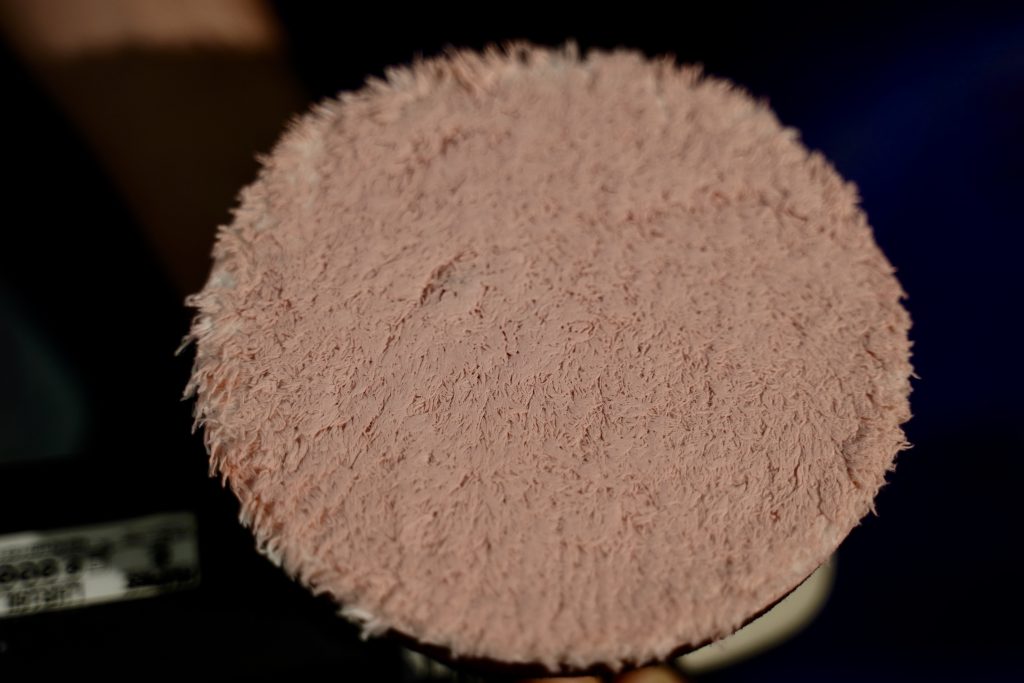
Meguiars Microfiber Cutting Disc after 1 polishing cycle. When the fibers are matted down the pad loses its cutting ability.
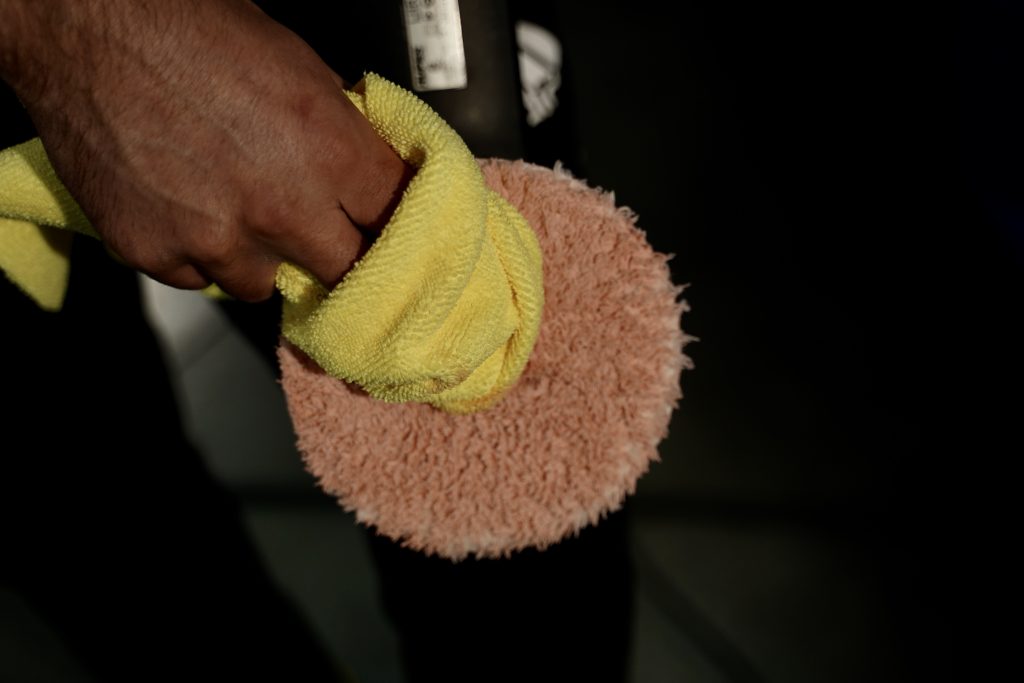
Technique 1 – microfiber towel cleaning.
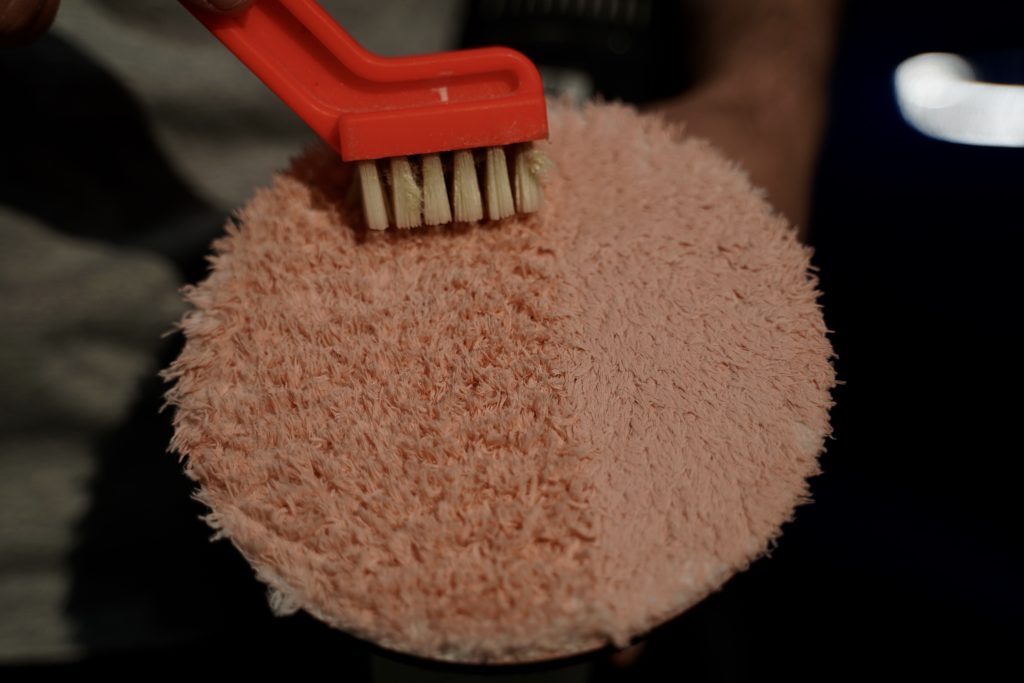
Technique 2 – brushing out the pad.
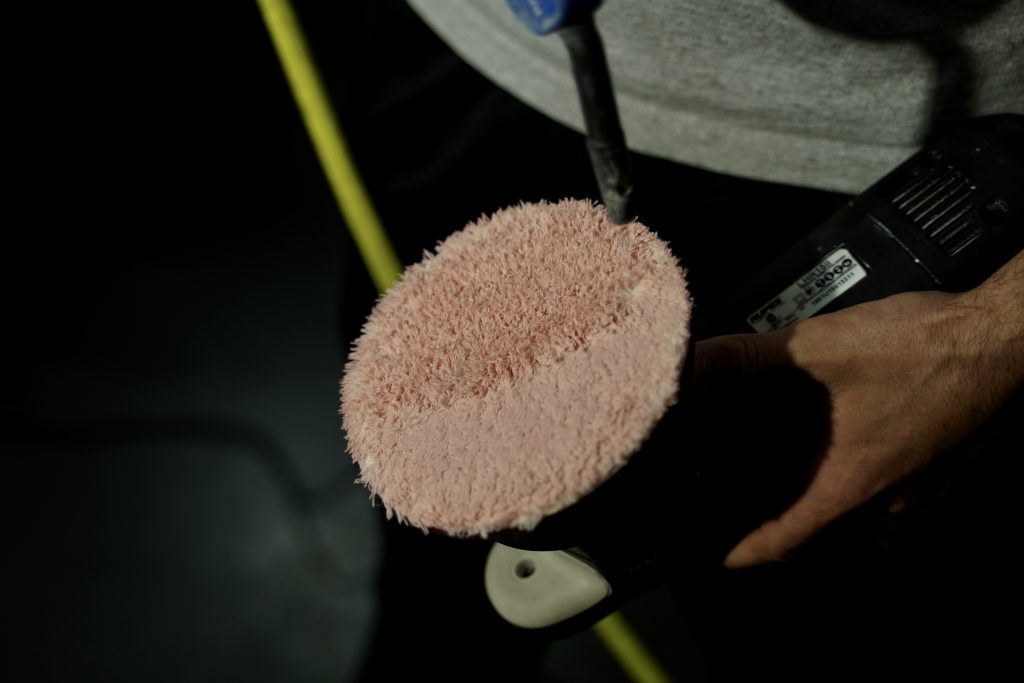
Technique 3 – Compressed air used to fluff up the fibers of the pad.
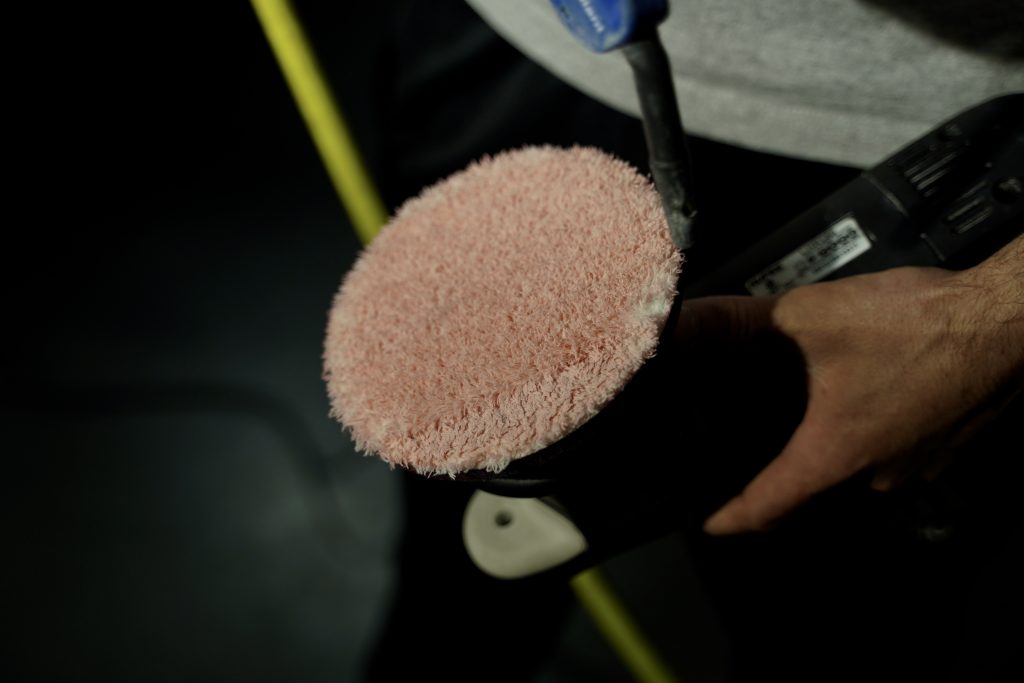
I hope these methods aid in helping you achieve a higher correction rate throughout your paint correction detail.
Related Posts
- Detailing Projects: Ferrari 488 Pista #2 Paint Correction, Clear Bra, & Ceramic Coating
- Video | Griot’s Garage G9 Orbital Initial Impressions
- Projects: 2019 Subaru WRX, Swissvax Detail
- Projects: Lotus Evora GT, Paint Correction, Clear Bra, Ceramic Coating
- Detailing Projects: Ferrari 488 Pista Paint Correction, Clear Bra, & Ceramic Coating








Thanks James for the detail tips. I have had this happen and was not sure what was going on. I change to a new pad when I have it happen in the past. When cleaning the polisher pad do you need to spin at a slow speed?
Kind Regards,
Hank Dixon
Hank, I typically run the machine at speed 3-4 when cleaning with microfiber.
Great topic, great explanation, great description, great how to! Valuable information to beginners and those of us that have a few details under our belts. The fact is oftentimes you get caught up in the job itself and forget how much cleaning the pad helps out with the results. Thanks!
Thanks Dave!!!
Hi,
Great info. I like the different choices for cleaning. What exactly is a “polishing cycle”? Is it time, area covered or something else?
Regards,
JE
A polishing cycle is a certain amount of time a 2×2 section of paint is polished using a cross-hatch pattern.
For those of us using foam pads, how do you feel about using the Grit Guard pad washer? Other than it being just a tad tad wet, I’ve been doing this all summer and it works amazing. I can use 1 pad to do an entire vehicle with no problem at all. Just spin out the pad and away I go again. Thoughts?
Hey Ric,
I like the pad washer, but as you said, I also find it, to get a little too wet for on the fly cleaning. Great overall tool for pad cleaning though.
I’ve used all 3 methods, depending on the paint. My “go-to” on the fly is using toweling to clean the pad, but when polishing out single stage paints, compressed air is the way to go!
James.. thank you for these essentials.. it makes us all better detailers!
Thanks Ron!
Is there a link for all of these items. I have read some but not all and would like to bookmark them for future reference. Thanks, Matt
If you’re detailing cars do yourself a favor and get a air compressor. You don’t need an expensive one, a pancake compressor will work just fine. They’re definitely a multitasker from blowing water from the engine compartment and electrical connections to spaces between panels, from behind emblems, interior work to cleaning pads just to name a few. Any way you decide to clean your pads be mind full an abrasive dust cloud will be created. More so with compressed air than a brush. Compressed air is the most effective. Be aware of the wind direction and the dust doesn’t settle back on your work surface. Be sure not to breath it! Any method you decide to use. Keep your pads clean for consistent results. To get professional results don’t cut corners. Go through all the steps and do them well.
Great article, thanks.
As a Rotary user, clean pads are absolutely necessary, and I have been cleaning my foam pads after each set of passes on that one area, forever.
I use only clean, white, small, cotton towels, and a little detailing spray, wiping all the stuff accumulated on that spot off, then keep going until this pad is now too full of gunk, wet, and then, put a new one on.
You can see quickly, when your correction, polishing, etc., is not matching the previous spot, and then make whatever change needed.
I like to keep the pad, product, & paint a little moist, to fully get the most time on the paint, and it works great for me and my Makita..
Hated blowing with air..So you blow it off- where does it go???
Right- everywhere..
Snappy clean gets everything out perfectly from the Lake Country pads…
Dan F